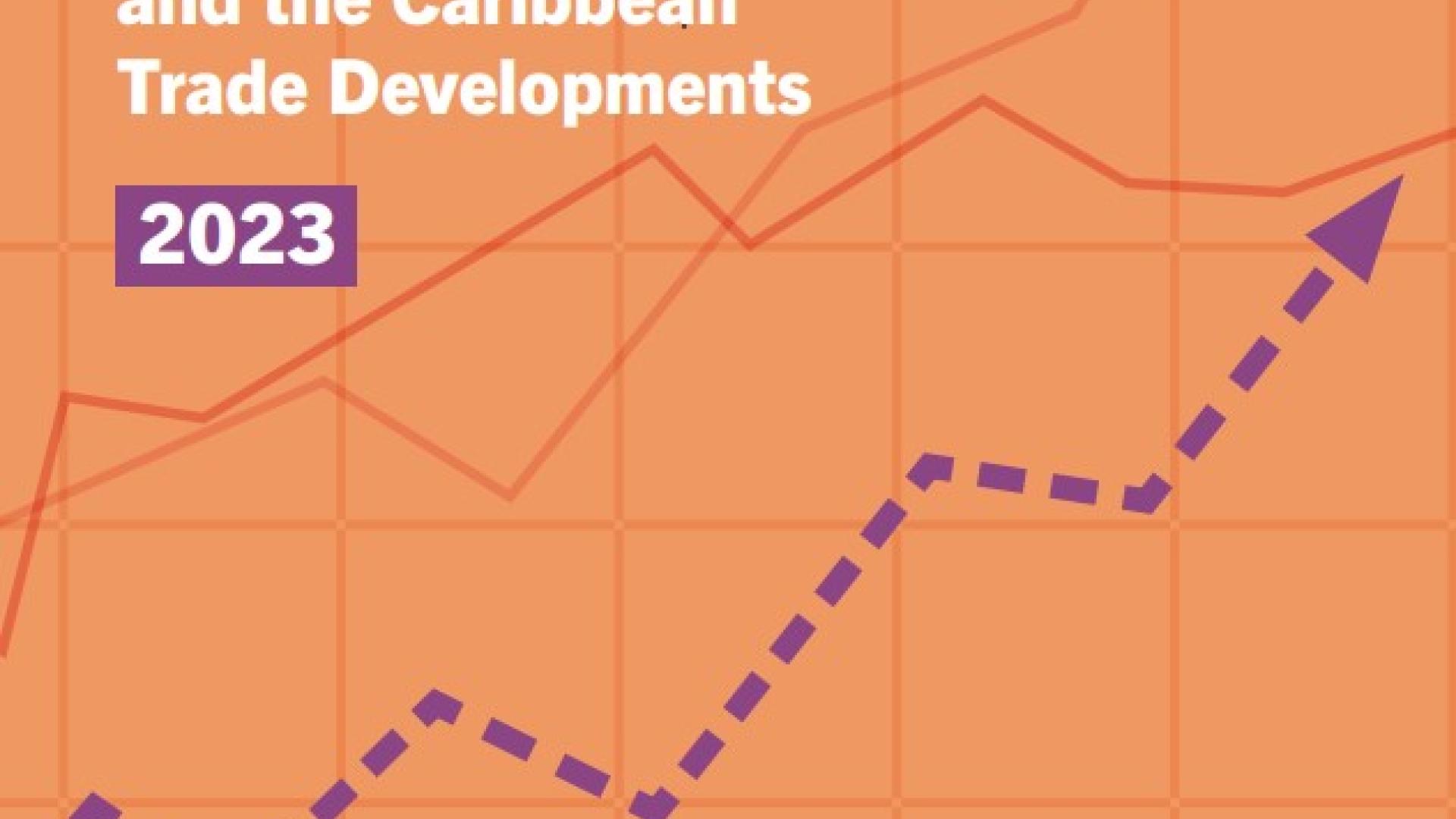See the attached agenda.
Input-Output Tables as a Tool for Trade and Industrial Policy in Latin America and Relations with Asia-Pacific
0.jpg

ECLAC, through its International Trade and Integration Division and in collaboration with the Ministry of Foreign Affairs of the Dominican Republic, is organizing the International Seminar "Input-Output Tables as a Tool for Trade and Industrial Policies in Latin America and the Caribbean and Relations with Asia Pacific,” and the roundtable “Dynamics of the Intra and Inter Regional Value Chains and Integration in Latin America and Asia.” These activities are taking place under the projects "Input-Output Tables for Industrial Policy in Latin America and the Caribbean” and “Development of Value Chains for Deeper Integration between Latin America and Asia Pacific.” The meetings will take place in the city of Santo Domingo between September 11 and 13.
During the Seminar, ECLAC will present the Input-Output Table for Latin America and the Caribbean for a group of 18 countries. Likewise, the results of various studies that have been developed from the table will be presented in order to identify value chains in Latin America, as well as trade links between the region and Asia-Pacific.
11 Sep 2019
-
Attendee Registration
08:45 to 09:00 -
Opening
09:00 to 09:30- José Durán Lima, Chief of the Regional Integration Unit, International Trade and Integration Division, ECLAC, Santiago
-
Block 1: Presentation of the Results of the Input-Output Tables (IOT) Project for Trade and Industrial Policy in Latin America
09:30 to 10:30- José Durán Lima, ECLAC SantiagoPresentation of main results of the IOT Project: 2011 Regional Matrix and preliminary developments for Global FEALAC IOT, 2011 and 2014Sebastián Castresana, CEPAL Santiago / Daniel Cracau, consultor CEPAL SantiagoPresentation of Dashboard of Indicators for trade and production created on the basis of 2011 Latin American IOT
-
Block 2: Input Output Tables for analyzing trade policy in Asia Pacific
10:45 to 11:30- John Arvin Cunanan Bernabe, Asian Development BankPresentation of indicators utilizing Input Output Table for Asia Pacific and its ties with public policy
-
Block 3: Value chains among countries in the Andean Community of Nations (CAN): Implications for intra- and inter-regional integration with Asia Pacific
11:30 to 13:00- The case of Colombia, Jaime Vallecilla, CRECEInput-Output Tables as a tool for Trade and Industrial Policies in Latin America and the Caribbean and its relationship with Asia Pacific.The case of Bolivia, Beatríz Muriel, INESAD BoliviaValue chains between countries of CAN, implications for the integration with Asia Pacific. The case of BoliviaThe case of Ecuador, Pedro Eloseguí, Central Bank of ArgentinaInput-Output Tables as a tool for Trade and Industrial Policies in Latin America and the Caribbean and its relationship with Asia Pacific: Ecuador IOTs 2014/15The case of Peru, Agustín Velásquez, JRC, European CommissionInput-Output Table: The Case of Peru
-
Panel Discussions with Representatives of Andean countries. Strengthening value chains as a tool for public policies
14:00 to 14:45- Jovana Palacios, DANE RepresentativeInput-Output TableAndrea Cáceres: Ministry of Production Foreign Trade Investments and FisheriesInput-Output TableYsabel Cristina Galván Palomino, Representative of INEI of PeruNorka María Cristina Tapia Villarreal, Representative INE Bolivia
-
Block 4: Value chains between South American Common Market (MERCOSUR) countries and Chile: Implications for intra- and inter-regional integration with Asia Pacific
14:45 to 16:15Value chains between Chile, MERCOSUR countries, and Asia Pacific: An input-output focus
- Anahi Amar, ECLAC Buenos Aires; Matias Torchinsky, ECLAC Buenos Aires, ConsultantValue Chains between Chile MERCOSUR countries and Asia Pacific. An input-output approach. The cases of Argentina and Brazil.Álvaro Lalanne, ECLAC ConsultantValue Chains between Chile MERCOSUR countries and Asia Pacific. An input-output approach. The case of Uruguay.Adrián Gutiérrez, Universidad de San MartínValue Chains between Chile MERCOSUR countries and Asia Pacific. An input-output approach. The case of Paraguay.Alexis Bolivar, JRC, Comisión EuropeaValue Chains between Chile MERCOSUR countries and Asia Pacific. An input-output approach. The case of Venezuela.Nicolas Garrido, Universidad Diego PortalesValue Chains between Chile MERCOSUR countries and Asia Pacific. An input-output approach. The case of Chile.
-
Panel Discussion: Strengthening value chains as a public policy tool
16:30 to 17:00- Edgar Gómez, Ministry of Finance of ParaguayPablo Riera, MERCOSUR Secretary RepresentativeCristiano Martins, Representante IBGAVivivana Araneda, SUBREI Chile
12 Sep 2019
-
Block 5: Value Chains between Mexico, Central America, and the Caribbean: Implications for intra- and extra-regional trade with Asia Pacific
09:00 to 11:00Value Chains between Mexico, Central America, the Caribbean, and Asia Pacific: An input output focus.
- Rodolfo Mincer/Roberto Orozco, ECLAC MexicoThe dynamic potential of exports in Central America and the Dominican Republic: empirical evidence based on the analysis of input-output tablesGissela Gutierrez, INEGIParticipation of Mexico in the GVCDiego Agüero, Representative of the Central Bank of Costa Rica
-
Panel discussion with Central American and Caribbean country representatives. Strengthening value chains as a tool for public policies
11:25 to 12:00- Karla Enamorado, Central Bank of HondurasCarlos Figueroa, Central Bank of GuatemalaAlí Samoya Mena, Central Bank of NicaraguaRepresentatives from Panama, INECWilliam Sánchez Vásquez, Central Bank of El Salvador
-
Block 6: Additional Analysis of Public Policies on the basis of IOT and Social Accounting Matrices
16:30- Analyzing Public Policies using General Equilibrium Models and its ties to Sustainable Development
- Martín Cicowiez / Sebastian CastresanaThe SIEGPAAL model and evaluation of public policiesLuis AquinoApplication of the IOT for Economic and Prospective Analysis: The Case of El SalvadorNorihiko YamanoCO2 Emission embedded in final demand and trade utilizing the OECD Input Output TableJosé Durán / Cristobal BudnevichApplications of the IOT and sustainable development. The case of CO2 content in final demand and trade in Latin America and the Caribbean.Marcelo Dolabella / Mario SaeterosLabor content in Latin American exports. Estimates on the basis of the 2011 Regional IOT.
-
Block 7: Final Remarks
16:30 to 17:45- Diego Caicedo, Vice Minister of Foreign Trade, EcuadorInput-Output Tables and Public Policies, a perspective from policymakersJosé Durán Lima, Chief of the Regional Integration Unit, International Trade and Integration Division, ECLAC, Santiago
13 Sep 2019
-
Round Table Discussion: “Dynamics of the Intra and Inter Regional Value Chains and Integration in Latin America and Asia”
08:45 to 09:00 -
Block 1: Presentation of Case Studies
09:00 to 10:15Latin American Study: Identification of sectors in the value chain, main productive and trade linkages between Latin American and Asia Pacific countries. Results of the ECLAC study.
- José Durán Lima, ECLACIntra-regional and inter-regional value chains, Latin America and the Caribbean and Asia PacificAlvaro Lalanne, ECLACValue-added circulation and vertical integration in Latin America and its relationship with Asia Pacific
-
Asia Pacific Study
10:15 to 11:30Asia Pacific Study: Identification of sectors in the value chain, main productive and trade linkages between Asia-Pacific and Latin American countries. Results of the ESCAP study.
- John Arvin Cunanan Bernabe, Asian Development BankValue Chain Dynamics and Intra- and Inter-Regional Integration in Latin America and AsiaWitada Anukoonwattaka, ESCAPAsia-LAC integration through GVCs: Preliminary results based on MRIO data of Asia-Brazil and Mexico
-
Block 2: Discussion about intra- and inter-regional value chains in light of Regional Integration Organizations
11:45 to 13:00Discussion based on regional studies and lessons learned in case studies presented in previous sessions
- Huascar Ajata, Secretariat of the Andean Community RepresentativePablo Riera, MERCOSUR RepresentativeEduardo Espinoza, SIECA RepresentativePedro Barros, IPEA RepresentativeViviana Araneda, Representative of Chile, member of the Pacific AllianceHugo Francisco Rivera Fernandez, Representative of FEALAC, Vice Minister of Foreign Affairs for Economic Affairs and Regional Cooperation, Dominican Republic
-
Block 3: Final Comments and Closing
13:00 to 13:30- Comments by the Honorable Mr. Hugo Fco. Rivera Fernández, Vice Minister of Foreign Relations for Economic Affairs and International CooperationClosing Remarks. José Durán, Chief of the Regional Integration Unit, International Trade and Integration Unit, ECLAC


